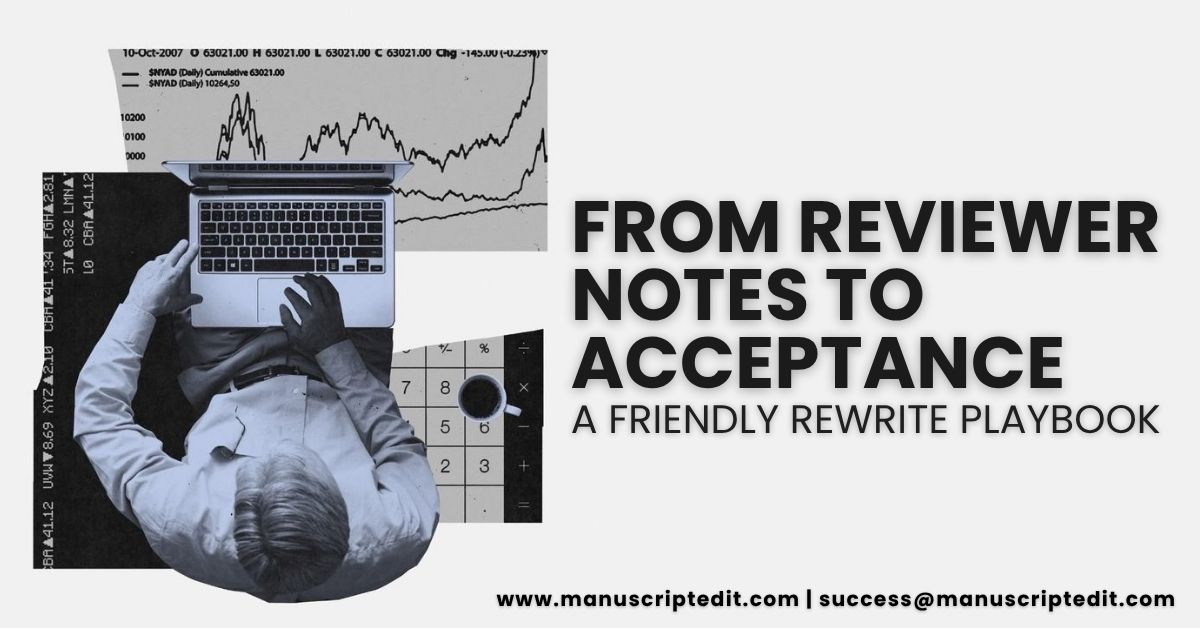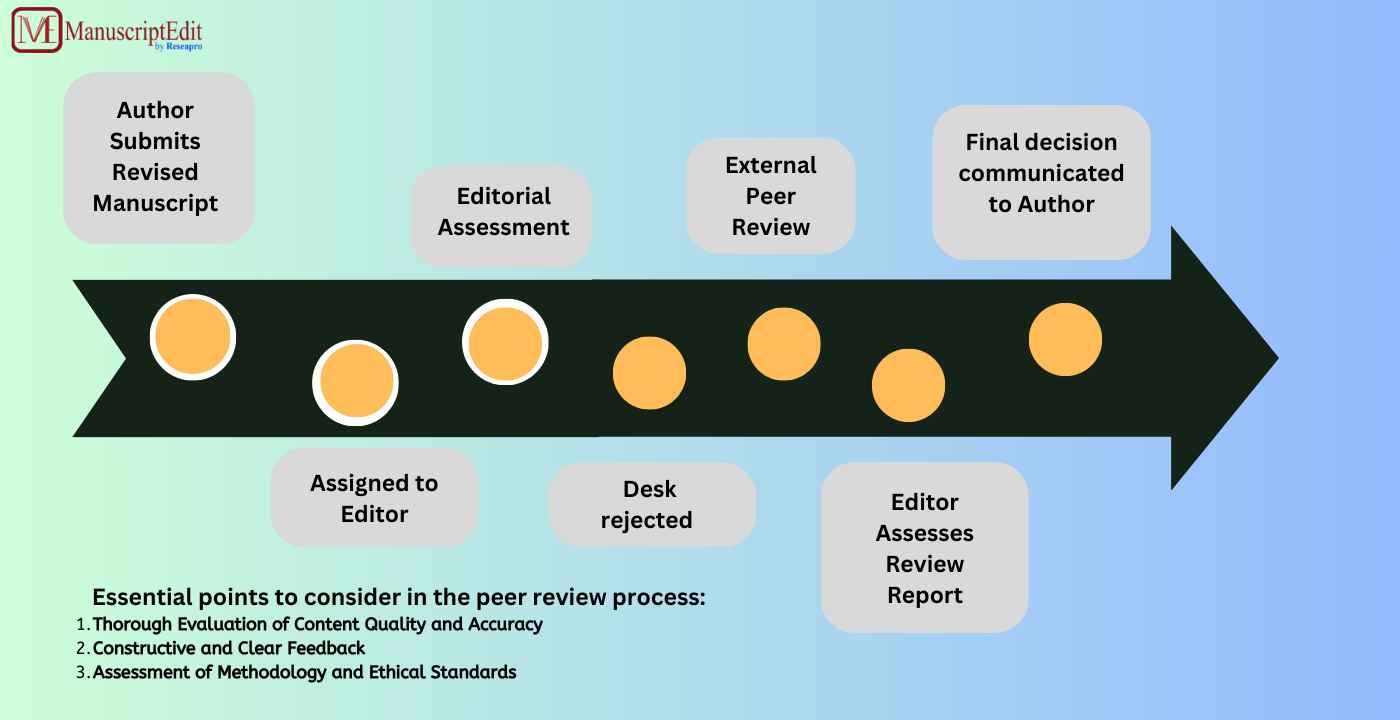Table of Contents
Why this matters (and why it’s fixable)
You’ve opened the decision letter and your pulse jumps: “major revisions.” It’s not a no—and most papers that reach peer review can be accepted with a clear rewrite plan and verifiable fixes. Editors look for two things during revision: (1) did you address the science—methods, analyses, interpretation? (2) can they verify the fixes quickly—precise locations, clean figures/tables, tidy files? This playbook shows how to turn a stack of reviewer comments into a cleaner manuscript, a respectful point‑by‑point response, and a calmer resubmission—without losing months.
Step 1 — Decode the decision in 10 minutes
Skim the letter once without editing. Then classify each item into three buckets:
• Must‑fix science (design clarity, analyses, bias/confounding, sample size explanations)
• Presentation (figures/tables, legends, references, tone, structure)
• Nice‑to‑have (extra robustness checks, cosmetic suggestions)
Open a response table with three columns: Reviewer comment → Our action → Manuscript location. Copy comments verbatim (shortened if long) so you respond to the real request—not a paraphrase.
Step 2 — Align with the editor’s north star
Editors care about fit and verifiability. Write a one‑paragraph “revision intent” for yourself and your co‑authors, e.g.: “We will clarify design and bias handling, add a sensitivity analysis, shorten the discussion, fix figures, and revise tone. All changes are tracked and referenced.” This keeps the team aligned and your resubmission letter on‑message.
Step 3 — Fix the science first (then prose)
Address methods and results before beautifying sentences. High‑impact fixes include:
• Design clarity: state design and population in the abstract; move buried details to Methods.
• Bias/confounding: describe handling of missing data, selection bias, adjustments.
• Numbers that land: pair rates with denominators and deltas; add confidence intervals.
• Sensitivity/robustness: run the smallest extra analysis that directly answers the reviewer’s concern.
Example — Reviewer: “Baseline imbalance may bias effect estimates.”
Response (concise): “We added IPTW and adjusted models; the effect size remained similar (Δ=0.02; 95% CI …). See Methods p.7 and Table 2 (lines 141–156).”
Step 4 — Rebuild figures and tables so they explain themselves
Editors dread figure hunts. Make visuals self‑contained so reviewers can verify at a glance:
• Legends state dataset, split, metric, and CI; any adjustments are noted.
• Axes/units are readable at 100%.
• Multi‑panel figures share fonts and label style.
• Tables avoid merged cells; footnotes decode abbreviations.
If a reviewer “didn’t see” your key point, a clearer figure usually solves it.
Step 5 — Shorten and structure the Discussion
Aim for signal over length. A reliable structure is:
• Paragraph 1: one‑line answer to the research question (the take‑home).
• Paragraph 2: how it compares to 2–3 recent studies (cite them explicitly).
• Paragraph 3: clinical/public‑health/field relevance (realistic, not hype).
• Paragraph 4: Limitations—state them plainly and bound their impact.
• Paragraph 5: What’s next—future work, data sharing, or validation.
Step 6 — Tone: firm, polite, never defensive
Three phrases carry you far:
• “We thank the reviewer for this helpful point.”
• “We agree and have …” (state exactly what changed)
• “We respectfully clarify that …” (only when disagreeing—then show evidence)
If a suggestion breaks scope or ethics, propose a bounded alternative: “While a new RCT is beyond our dataset, we added X sensitivity that addresses Y.”
Step 7 — Show your work so they can verify fast
Every response should point to exact locations: “Methods, p.5, Statistical Analysis, lines 102–117,” “Figure 3 replaced; legend updated,” “Supplementary Table S2 added.” Upload both a tracked‑changes version and a clean version. Clarity speeds acceptance.
Step 8 — Package like a pro (the submission bundle)
A tidy resubmission typically includes:
1) Point‑by‑point response (numbered, polite, with page/line pointers)
2) Revised manuscript with tracked changes
3) Clean manuscript
4) Updated figures/tables (journal‑compliant formats)
5) Reporting checklists (PRISMA/CONSORT/STROBE as relevant)
6) Short cover letter (two paragraphs: what changed; why the paper now clearly fits)
Mini case (anonymised)
A cardiology observational study received “major revisions” for unclear confounder handling and messy figures. The authors: added a concise confounding paragraph and IPTW sensitivity; rebuilt two figures with readable axes and full legends; trimmed the Discussion by ~300 words; and submitted a crisp response table with page/line pointers. Outcome: accepted after minor edits. The science barely changed—the verification pathway did.
Can AI help here? Yes—carefully
Use AI to rough‑draft summaries or reorganise text, but verify every number, citation, and claim. Disclose AI assistance per journal rules. For bias, sensitivity, and statistics, rely on your team (or ours), not a chatbot. Tools are fast; acceptance requires accuracy.

Need a co‑pilot?
ManuscriptEdit – Peer Review + Journal Selection Review (JSR) for ₹8,000 gives you a mini peer review plus a three‑journal shortlist with rationale—ideal before resubmission. We can also help structure your response table and polish the revised manuscript.
Click here to Learn More!
Your 60‑minute action plan (today)
1) Classify every comment (must‑fix science / presentation / nice‑to‑have).
2) Add three new Methods locations: design clarity, bias handling, sensitivity.
3) Rebuild one key figure with a self‑contained legend.
4) Draft the first five lines of your response letter—polite, specific, verifiable.
5) Put a date on the calendar for resubmission. Momentum beats anxiety.
Click Here to read more such interesting blogs.



